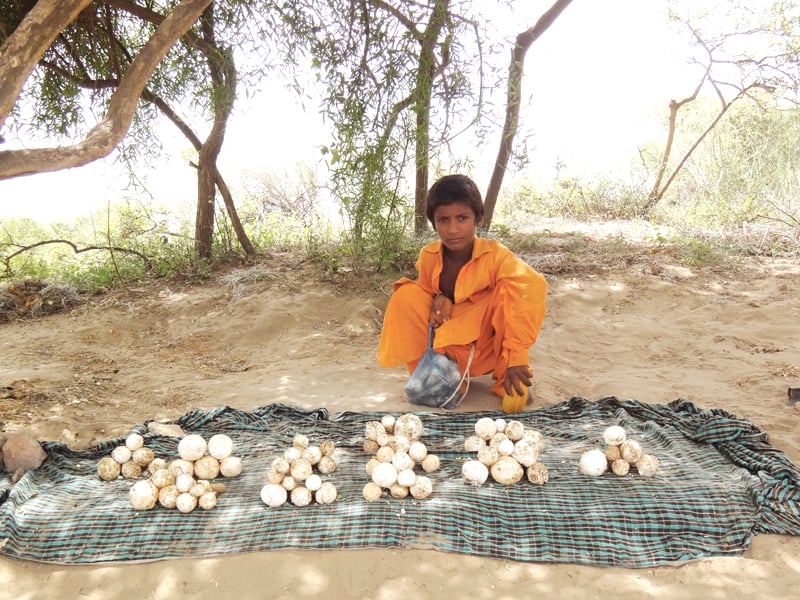
Poor Hindu Bheels, Kolhis and Meghwars manage to make a little cash on the side by gathering the mushrooms. They sell them along roadsides on the outskirts of the towns and in the markets. Sometimes the children get creative by stringing a few of them together to try and attract customers. You can buy plastic bags full of them, so fresh that the soil is still clinging to their soft white skin.

SOURCE: PAKISTAN JOURNAL OF AGRICULTURAL RESEARCH 2007
“I charge Rs200 per kilogramme from locals and Rs300 to Rs400 from visitors,” said 10-year-old Kheto Kolhi. He manages to sell five to six kilogrammes a day when they are in season. Indeed, the visitors to Thar who have come to enjoy its rare window of greenery after the rains take the mushrooms back as gifts.
A lot of people buy them as a herbal fix for bone health. The fungi contain copper and zinc, two trace minerals that work together. They are chock full of vitamin D and other important minerals such as selenium and potassium. You get the best out of them by slicing raw for salads. They are also a good source of protein, dried. The protein content of a fresh mushroom is roughly 4%, dried mushroom 30% and beef 21%, for example.

The window of opportunity to ‘harvest’ and sell mushrooms is a small one in Umerkot and Tharparkar districts. The fungi suddenly sprout in a 24-to 48-hour period after the rains. “Mushrooms mostly grow on land where rainfall is high and soon after a rainy spell when the sun’s rays strike the soil,” explains Ayaz Kachelo, an agriculture expert. Some locals believe in the myth that they suddenly appear, overnight, if there is thunder.
Kachelo could not put a finger on how extensive the growth is but he felt that if the government set up a small research lab or a small farm to grow them commercially, they would perhaps have a better idea of how big they can be as a business.

Mushrooms being sold in Tharparkar and in Mithi.
PHOTO BY SAJID BAJEER AND KHALID KUMBHAR
It could really help the local economy, even for a short time, agrees Kirshan Sharma, a development expert, who gives the example of many other countries that were cultivating edible mushrooms commercially. In Pakistan, aside from Thar, the mushroom is found more commonly in Khyber-Pakhtunkhwa. Out of a total of approximately 400 species of mushrooms in Pakistan, about 44 or 10 per cent are said to be edible.
For the people of Thar, the mushroom is like food for kings, said social activist Abdul Haleem Soomro. They get excited when it appears because it tastes like chicken — the poor man’s chicken.
Published in The Express Tribune, Sunday Magazine, September 15th, 2013.

1725967717-0/Untitled-design-(3)1725967717-0-165x106.webp)

1725275251-0/Untitled-design-(3)1725275251-0-165x106.webp)













COMMENTS
Comments are moderated and generally will be posted if they are on-topic and not abusive.
For more information, please see our Comments FAQ